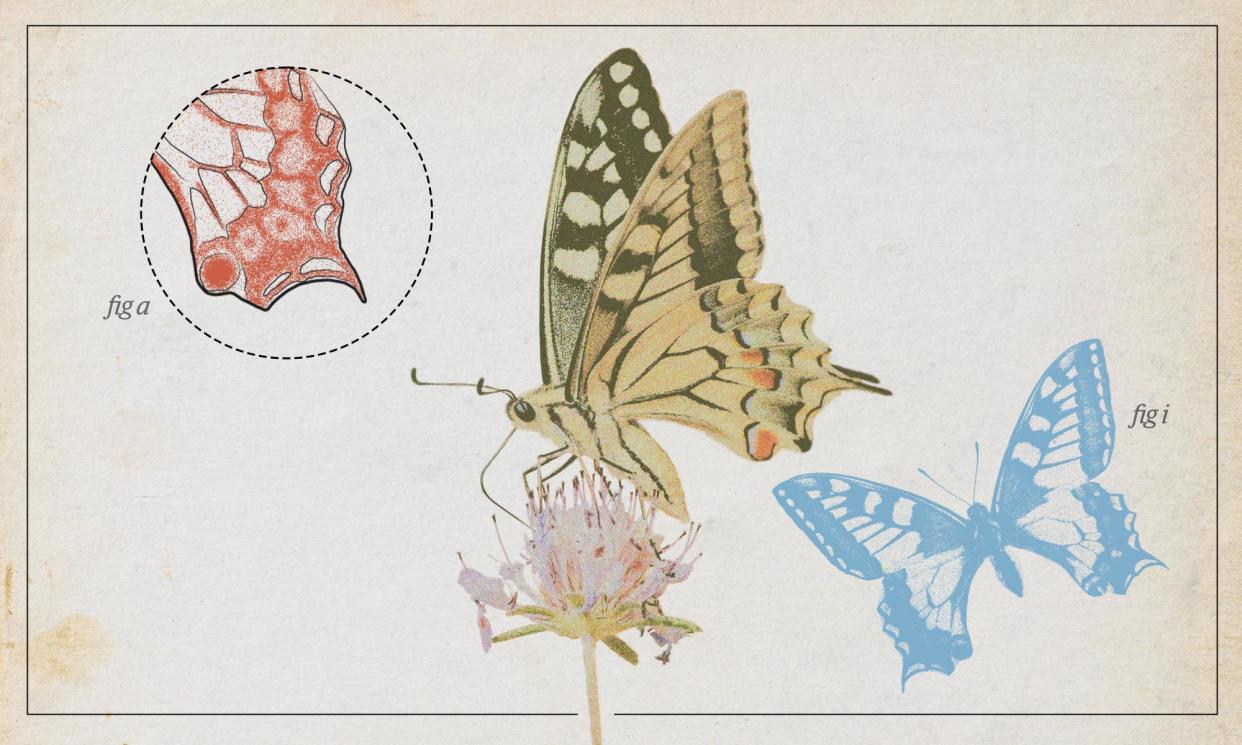A very British butterfly: spectacular swallowtail is built for capricious summers

The swallowtail is Britain’s largest and most spectacular butterfly. Most British butterflies are adapted to surviving gruelling, cold, wet, capricious summers, which is why many of them are small and brown.
But with tigerish stripes, dashes of iridescent blue and red, and dapper tails, this magnificent animal looks like it escaped from a tropical butterfly house.
Ironically, it is more British than most nominations for UK invertebrate of the year. As a small offshoot of continental Europe, Britain has relatively few endemic species that are unique to the country. But, as the last part of its scientific name, Papilio machaon britannicus, reveals, this swallowtail is a uniquely British subspecies.
The swallowtail represents Anthropocene-era evolution in action. It’s what happens when much of your habitat is destroyed and you’re isolated on small pockets of wetland that are home to the only plant (milk parsley) your caterpillars will eat.
This big, powerful butterfly is naturally mobile and fast-flying; like all butterflies, the biggest and strongest may choose to disperse, flying away from home, searching for a new habitat.
Related: In defence of slugs and moths: the pesky invertebrates Britain loves to hate
They venture far, flying over arable fields and drained and built-over wetlands, and what do they find? Nothing at all. No suitable habitat. No future.
The only butterflies that survive are the smaller, weaker specimens, who stick closer to home, and don’t fly as far. Over the years, natural selection favours this choice and so the British swallowtail is smaller and more slender than its robust continental cousin. (It is also darker in colour, probably because conditions here are cooler.)
Today, the British swallowtail is only found on the Norfolk Broads, England’s largest freshwater wetland. But the species is in trouble. Last year the lowest number of individuals were counted since scientific monitoring began in 1976. Its breeding locations have shrunk from 20-plus to just 16 over the last few years.
A disease is attacking its milk parsley food plant. But most seriously, the freshwater Broads are imperilled by the climate crisis. Seas are rising, the east coast is eroding, and salt water is increasingly seeping and being washed by floods into the Broads.
Saline water kills milk parsley. It is unlikely that the Broads will survive in their freshwater form much beyond this century. The swallowtail cannot find other suitable habitats without us providing them.
So we need to act to save this species. It needs a huge wetland to be viable. The Great Fen project near Cambridge may deliver that, but the swallowtail needs more.
There is another irony. As the British subspecies dies out, global heating is pushing its continental cousin across the Channel and on to the south coast more and more. This swallowtail can still reproduce via wild carrot, fennel and other species. Some summers, it breeds in Britain.
Will it fly north and meet the British swallowtail, stranded on the Norfolk Broads? Will the two subspecies hybridise? Will the altered subspecies flourish once again? Change is coming.
Welcome to the Guardian’s invertebrate of the year competition! Every day between 2 April and 12 April we’ll be profiling one of the incredible invertebrates that live in and around the UK. Let us know which invertebrates you think we should be including here. And at midnight on Friday 12 April, voting will open to decide which is our favourite invertebrate – for now – with the winner to be announced on Monday 15 April.


